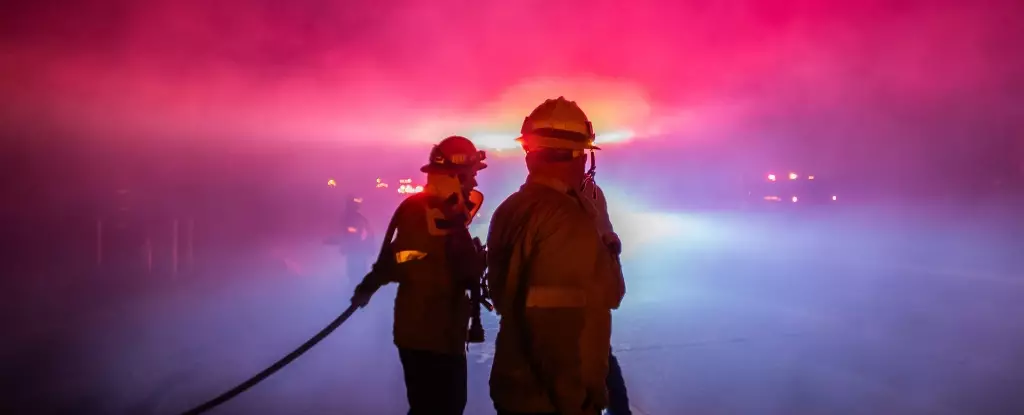The Franklin Fire, which ignited in the Malibu area, serves as a sobering reminder of the persistent wildfire threat faced by Californians, particularly those living in regions notorious for their susceptibility to such disasters. On Wednesday, as firefighters engaged in a robust effort to contain the blaze, the fire made a notable advance, prompting mass evacuations—including those of high-profile Hollywood figures. The destruction of at least seven homes in this affluent enclave underscores the severity of the situation, driven largely by powerful winds that propelled flames through steep canyon landscapes.
With a staggering 4,000 acres already scorched since the fire erupted late Monday near Pepperdine University, the epicenter of the incident not only impacted the local community but attracted widespread media attention due to the celebrity residents in the area. Images of students being herded into fire-resistant buildings by university staff were shared widely on social media, capturing the real-time peril posed by the inferno.
Los Angeles County Fire Chief Anthony Marrone provided updates on the containment status, noting some progress on the eastern and northern flanks of the fire. However, he advised that residents should remain cautious, as the western front exhibited growth overnight. The Chief highlighted the impact of changing weather conditions—specifically, strong winds and low humidity—on the behavior of the blaze. The issuance of a Red Flag Warning was particularly concerning, indicating severe fire danger in the area and necessitating heightened vigilance among residents in affected zones.
Sheriff Robert Luna played a crucial role in coordinating the evacuation efforts, which reached approximately 20,000 people. Deputies conducted door-to-door notifications under pressure as the fire rapidly spread. This prompt action underlined the importance of community preparedness in emergency situations, especially given California’s long history with wildfire crises.
Celebrities like Dick Van Dyke shared their experiences of evacuation on social media, painting a personal picture of the chaos many faced. His heartfelt message about leaving behind a pet cat resonated with many in the community, highlighting the emotional toll of natural disasters.
The Franklin Fire reignited discussions about California’s ongoing battle with wildfires, exacerbated by extreme weather patterns linked to climate change. Experts point toward the increasing intensity and frequency of wildfires as a direct consequence of global warming, primarily driven by human activities. Enhanced drying conditions, as a result of prolonged dry spells, contribute to creating the perfect storm for such fires.
Moreover, decades of aggressive fire suppression policies have ironically led to an overabundance of combustible material in many rural areas. When fires occur, they burn hotter and advance faster than they might have if controlled burns or other land management strategies had been utilized effectively to reduce fuel buildup.
The current situation serves not only as a wake-up call for residents but also for policymakers who must grapple with effective fire management strategies amid changing climate conditions. As we reflect on the Franklin Fire and its impact, one cannot overlook the importance of sustainable land management, community education on fire safety, and adequate emergency response planning in mitigating future disasters.
As the Franklin Fire continues to pose dangers to both life and property, it emphasizes the need for a diverse and multifaceted approach to wildfire prevention and response. It involves understanding the intricate relationship between climate patterns, land management, and community preparedness. Firefighters, alongside local authorities and residents, must collaborate to create robust systems that prioritize safety and resilience.
Ultimately, the road to recovery from incidents like the Franklin Fire is long and challenging, but with proactive measures and community engagement, future tragedies may be averted. It is crucial to remain vigilant, informed, and prepared, ensuring that Californians can reclaim their beautiful landscapes and live in harmony with the environment.


Leave a Reply